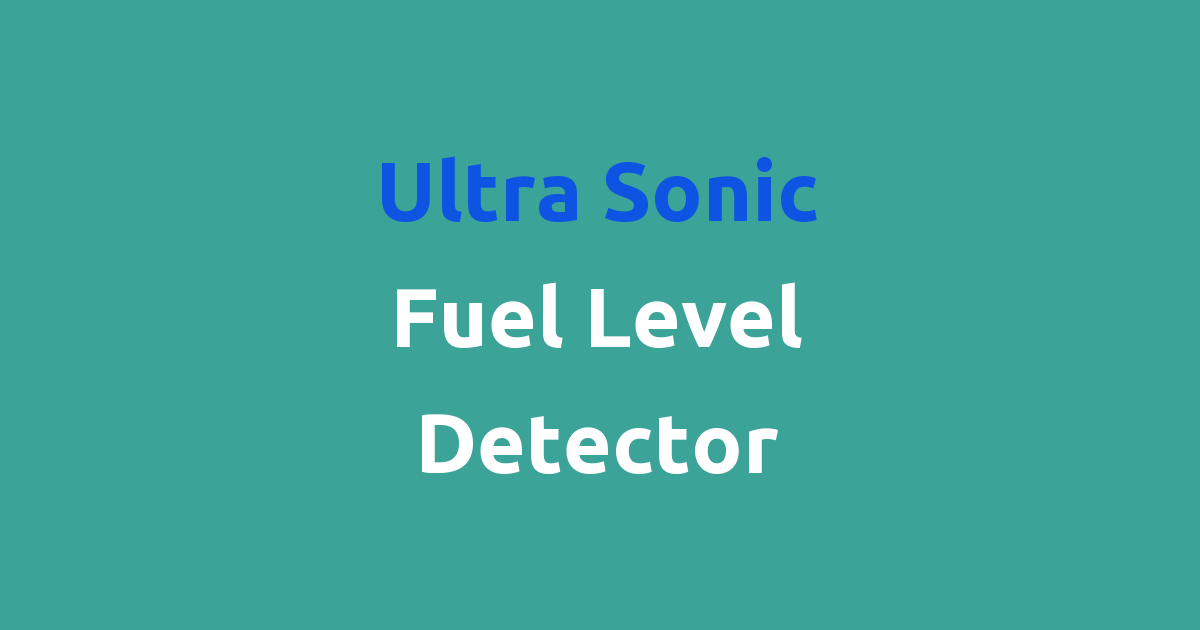Fuel level detector using ultra sonic technology.
Ultra Sonic Fuel Level Detector
Introduction
In the field of engineering, one of the most critical aspects is monitoring and managing fuel levels in various systems. The traditional methods of measuring fuel levels are becoming outdated and inefficient. This project aims to design and implement an ultra sonic fuel level detector that offers a more accurate and reliable solution for measuring fuel levels in tanks.
Problem Statement
The traditional methods of measuring fuel levels, such as float-based sensors or manual dipping, are prone to inaccuracies and errors. These methods require frequent calibration and maintenance, which can be time-consuming and expensive. Additionally, float-based sensors are not suitable for tanks with irregular shapes or sizes. There is a need for a more efficient and accurate solution for fuel level detection in tanks.
Existing System
The existing systems for fuel level detection rely on float-based sensors or manual dipping methods. Float-based sensors measure the fuel level based on the position of a float in the tank. However, these sensors are prone to errors due to fluctuations in fuel density and temperature. Manual dipping involves physically inserting a measuring rod into the tank to determine the fuel level, which is not only time-consuming but also risky.
Disadvantages
The disadvantages of the existing systems for fuel level detection include inaccuracies due to fluctuating fuel density and temperature, the need for frequent calibration and maintenance, and the inefficiency of manual dipping methods. These drawbacks can lead to errors in fuel level measurements, resulting in inefficiencies and potential risks in fuel management systems.
Proposed System
The proposed system for fuel level detection is an ultra sonic fuel level detector that uses ultra sonic waves to measure the distance between the sensor and the fuel surface. This method is non-contact and does not rely on physical contact with the fuel, eliminating the need for calibration and maintenance. The ultra sonic fuel level detector is suitable for tanks of all shapes and sizes and provides accurate and reliable measurements.
Advantages
The advantages of the ultra sonic fuel level detector include accurate and reliable measurements, non-contact operation, compatibility with tanks of all shapes and sizes, and minimal maintenance requirements. This system offers a cost-effective solution for fuel level detection in various applications, including automotive, industrial, and residential fuel tanks.
Features
Some of the key features of the ultra sonic fuel level detector include:
– Non-contact operation: The sensor does not need to come in direct contact with the fuel, reducing the risk of contamination and damage.
– Accuracy: The ultra sonic waves provide precise measurements of the distance between the sensor and the fuel surface, ensuring accurate fuel level readings.
– Compatibility: The detector is suitable for tanks of all shapes and sizes, making it a versatile solution for fuel level detection.
– Low maintenance: The system requires minimal calibration and maintenance, reducing the overall cost of ownership.
– Cost-effective: The ultra sonic fuel level detector offers a cost-effective solution for fuel level detection, making it an ideal choice for various applications.
Conclusion
In conclusion, the ultra sonic fuel level detector is a reliable and accurate solution for measuring fuel levels in tanks. This system addresses the limitations of the existing methods of fuel level detection and offers a more efficient and cost-effective solution. By implementing the ultra sonic fuel level detector, organizations can improve the accuracy and reliability of their fuel management systems, leading to increased efficiency and reduced operational costs.

